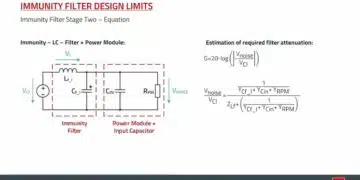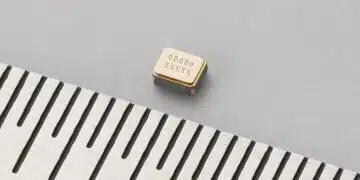“The past interviews of the month covered so far some medical and space applications of passive components, as well as supercapacitor research inputs and some view from a global passive component manufacturer. But let’s move back to the roots in the next Interview of the Month. I have asked William A Millman to talk about the raw material supply and its challenges under the current cost down, conflict free and other legislation issues.” T.Zednicek EPCI
> Q1 EPCI: Hello Bill, can you please briefly introduce yourselves, your current position and your experience/relation to the passive component technologies ?
W.A.Millman:
Thank you Tom, I graduated from Plymouth University, UK with a degree Electrical and Electronic Engineering. Recently retired as the Director of Corporate Quality for AVX Corporation, headquartered in Greenville, South Carolina, USA. I have been Involved in all aspects of the capacitor industry for over 40 years including R&D, engineering, manufacturing, materials, process and new product development, quality and more recently in the development of models for responsible sourcing of ‘conflict-free’ tantalum minerals through innovative initiatives. Examples of this include the world leading ‘Closed Pipe’ model for ‘conflict-free’ responsible sourcing of tantalum materials to the electronics industry. Co-developer of the Solutions for Hope platform, which is presently piloting a Geological Passport system for mineral traceability from Rwanda and the DRC, as well as engaging in Colombia as we approach hopefully a post-conflict status.
> Q2 EPCI: The base material supply chain was out of prime interest of passive component users unless there were a years of “crises” such as a palladium price spikes or some issues such as tantalum ore from Congo conflict areas. Nevertheless in past years the number of requirements including “conflict-free” and ROHS are pushing manufacturers to take responsibility for a whole supply chain and its control. Can you please describe what impact such requirements are having on the raw material mining, processing and handling and what challenges the raw material supplier are currently facing ?
W.A.Millman:
One advantage of being involved in industry over four decades is that you see the ‘big picture’ at times! I have seen over this extended time customers concerns around standardisation, quality, reliability, environment, health and safety, basic workers rights develop into international standards adopted and recognised globally. We now see the natural progression here where human rights, child protection, protection from abuse, safety and security come to the fore. This highlights that our purchasing decisions and choices can and do have a direct bearing on these outcomes. So these pressures are coming from us as customers and is part of a global continuous improvement drive. The ‘Know Your Customer’ concept is now being applied where it is essential that you know your supply chain and are a responsible partner. Many may see this as just another cost burden but more enlightened companies also see this as an opportunity to better understand, manage and secure their supplies, while also acting responsibly. Many of the ‘crises’ in the past were as a result of industry not knowing their own supply chain. The US legislation contained within the Dodd-Frank Act and the SEC1502 provision required US companies to report their sourcing of the 3T’s + Gold – that is Tin, Tantalum, Tungsten plus Gold, as widely used electronic materials and were chosen as raw mineral sourcing included the DRC, where a long protracted civil war was active. The mineral trading here and in surrounding countries were alleged to be involved in funding of the warring parties, although of course the root causes of the conflict were far more complex than simply fighting over valuable minerals. The impact of this legislation was immense. When an industry as huge and influential as electronics turns its collective eyes to problem then things change and radically. Transparency was key and as a result non-value added operations, operators – or so called ‘middle men’ – had no home in these responsible supply chains. So actually the complexity, number of tiers, chains in the link of custody reduced considerably. Reporting systems and minerals traceability schemes were developed and implemented, largely as entities such as the EICC (Electronic Industry Citizen Coalition) acting as industry representatives assisted standardisation along the supply chains. In-region initiatives such as the one I was deeply involved with, Solutions for Hope, where sourcing from conflict-free mine sites engaged directly with miners and their communities, through to end customers, were essential to prevent the then call for a defacto embargo on the DRC and the whole of central Africa as a source of these minerals. This would have had huge serious social economic negative impacts on those already living lives of hardship and deprivation. Through such schemes and fewer non value added participants in the supply chain, more wealth from mineral trading is kept in country, lifting the livelihoods of the mining community and encouraging investment in mining practices and infrastructure. So actually, all of this scrutiny is resulting in an improving situation on the ground, a more secure supply chain, investment and development as well as improvement in security and safety! I can hear the unasked question – and the extra costs? Actually this has been cost neutral to the industry and will help alleviate future surprises around so-called shortages.
> Q3 EPCI: We have heart many times of shortage of some element and the rest of years until the sources are completely depleted, … nevertheless most of the time such predictions have not happened as new natural source or alternative solutions have been found. Do you see currently some shortage / material / processing issues that could influence negatively or positively the passive components supply ?
W.A.Millman:
Yes, in the past decade we have seen a commodity super bubble develop and burst! Again one small advantage of being around so long is that I have seen these develop before as well as seen and experienced the after effects. While it would be easy to sit back and relax as we see a wide range of metals fall in price – including the 3T’s + Gold – now is not the time to assume all metal supply issues are over. Indeed, often lack of demand as seen as a result of a speculative price bubble bursting is depletion of inventories, reduced investment in geological prospecting, mining, expertise is lost and workers leave the industry. This is the paradox – while industry is fast moving, very cyclical and new ‘wonder’ metals allow of unheard of performance that we all demand immediately, mineral extraction, processing and refining takes long term, capital intensive, skilled experienced players.
So while it is tempting to look at some exoctic REE (Rare Earth Element) as the likley new shortage, it may be that without responsible engagement continuing in the everyday metals we are consuming today, then these will become the next issue! This just reinforces my earlier point that it is just good business practice to get involved deep into your supply chains. I had a old maxim in quality that I apply here as well – No surprises!
> Q4 EPCI: The electronic industry is mainly driven today by high volume consumer applications and individual consumption that is typical by extreme requirements on supply chain flexibility. It can be seen that for example a mobile phone design can change every three month but time to volume in millions of components may have a supply limitation within a six month … but it may be hard to double production of mines in month time. How the raw material supply are addressing such big challenge and gap between the end business high volume flexibility needs and physical limitation of scale up/down on mine sites ?
W.A.Millman:
Thank you Tom for this question. Yes, this is the paradox. How to provide secure, safe, sustainable delivery of critical components, in time, when demand can change dramatically, while exploration, mining, processing and refining to engineered materials can take months, even years. This is one of today’s biggest challenges. It requires a truly strategic approach along the supply chain and as we see more companies becoming aware of their responsibilities, they also gain better appreciation of this issue. I have seen smelters who provide multi-year contracts with mining communities that provides support pricing during low demand periods, component companies invest in larger inventories of metals and forward looking initiatives to try and smooth out the ‘boom or bust’ cycles we have all suffered from. One remarkable progress I have experienced and often goes unreported is recycling. Industry, as a matter of course looks to reduce, reuse and recycle, but the recent metals price spikes has help drive a consolidation in this area. That is users recycling metals back into their direct suppliers input chain – so a closed loop – again removing inefficient, non added value players. The develop of recycling and reprocessing is also a way forward to the global issue of e-waste. It is well reported that often such e-waste is illegally transported to developing countries, where communities are having their health destroyed through bad practices around recovering precious metals and materials. This is another area where enlightened thinking can close loop this scrap recovery to reduce the need for primary mined materials.
> Q5 EPCI: One of the trend seen at passive component manufacturers have been “a strategic vertical integration” when a passive component manufacturers are becoming also material processors and even taking some shares in mining companies. It is of course driven by the need to secure its own supply, nevertheless on the other hand – how is this changing the raw material supply environment in a global scope. Is it inducing more instability and limiting flexibility to supply wider range of applications and thus increase stability, increase the volume and lower the cost…. Is this vertical integration trend likely to continue per your view or the future is more towards an independent ore suppliers ?
W.A.Millman:
Yes, one approach has been to consolidate the supply chain within one company’s activities. This is a natural part of the process of consolidation of the industry – the strong players get stronger through this process and the weaker players get absorbed or fall out of the supply chain. This has its own challenges. While having your own smelter in your company you are also competing with others who have access to multiple suppliers and their combined resources. So to be successful here you have to have world class capability along all parts of the supply chain – the weakest link in the chain will determine your overall strength! A mix of vertical integration and alternate models of sources with companies that strengthen their chains through long term contracts, exchange of trends in demand, outlook, planning, intelligence sharing is likley to provide the right mix of security on one hand as against flexibility and responsiveness on the other. The great opportunity is that the transparency required for legislative purposes – the EU is actively engaged in development of its own ‘Dodd-Frank’ disclosures requirements – also allows easier understanding, access and information around sources of minerals and the players in the supply chain. This provides easier appreciation and involvement from a business perspective and each company is better able to develop its own strategy for what it considers strategic metals and minerals.
> Q6 EPCI: Is there any change in local government support / investment policies that may impact the ore supply ?
W.A.Millman:
Most laymen think of mining as large industrial mining pits, either open cast or underground, with large trucks moving huge amounts of mineral rich earth around them. The reality is that the world of mineral supply is made up of a mix of industrial and artisanal mining. Often the balance between these two become skewed as speculative prices drives investment from one to the other and visa versa. Developing countries with huge natural mineral sovereign wealth have limited ability to fully exploit the full value – often called the Resource Curse – leads developing countries government’s drive to appear to add value by adopting refineries and smelters in-region. Actually, one of the largest value added propositions is to access the minerals and export them! But to add more value these governments require mining expertise, long term investment, security, safety and investor protection under law. So the whole situation comes back to better governance, leading to greater investment, better security, improving incomes, sustainability. So yes, there is a virtuous circle where engaged responsible sourcing with developing countries governments can led to the outcomes we would all wish for.
Thank you Bill for your time and willingness to share your opinions with us.
About William A Millman
W.A.Millman is a founder and director of Mines, Minerals, Metals & Markets Ltd UK based supply chain consultancy company and Member of the Advisory Board for AB Minerals Corp.





























